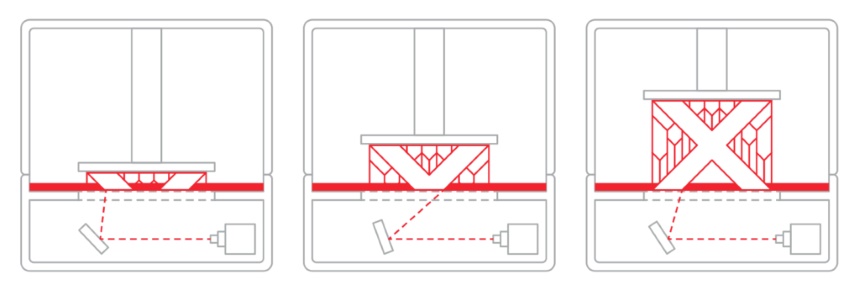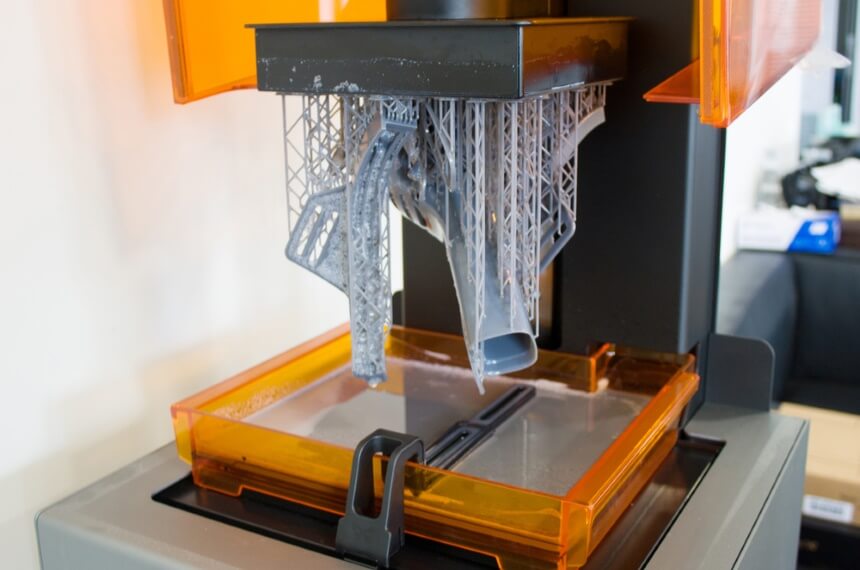

3D printing has been around for a while and has wholly revolutionized product development for the better. Honestly, it saves a lot of time for manufacturers and provides a viable route to evaluating the structural feasibility of a prospective product.
Even better than the advantages of 3D printing is the fact that many high-quality 3D printers are now affordable and suitable for use by ordinary individuals looking to become more serious with a potentially productive hobby. However, these have also led to the argument (or discourse?) of SLA vs. DLP printing processes and which is most suitable in certain situations.
Don’t get me wrong, there are more printing processes available for manufacturers of the printers to implement, but it makes more sense to cover them gradually, and these two have a relationship. That said, we shall be looking at the characteristics, advantages, and drawbacks of both methods. Settle down, and let’s get moving (or printing).

No introduction to 3D printing could be complete without a mention of the historical significance of SLA Trusted Source Frontiers | Progressive 3D Printing Technology and Its Application in Medical Materials | Pharmacology Three-dimensional (3D) printing enables patient-specific anatomical level productions with high adjustability and resolution in microstructures. With cost-effective manufacturing for high productivity, 3D printing has become a leading healthcare and pharmaceutical manufacturing technology, which is suitable for variety of applications including tissue engineering models, anatomical models, pharmacological design and validation model, medical apparatus and instruments. www.frontiersin.org . SLA (Stereolithography in full) was patented as far back as 1984, but research on the process had been ongoing for about a decade before then. Today, it is one of the complete printing solutions out there and is appropriately expensive to procure.
The “top to bottom” printers make use of a plate that would descend as each layer above it is completed, while the “bottom to top” printer prints literally, as the name imply, holding itself up by virtue of a platform underneath it.
Two of the advantages of this process over others in the 3D printing space are its speed and ability to print thin layers with a high degree of accuracy. However, it’s not perfect, and the major criticism leveled against it by many is the fact that the process hasn’t created any biodegradable resin as of yet, something that other 3D printing processes have had relatively more success doing. Regardless, it is important to note that more recent SLA printers feature a lot of upgrades to the original mechanisms that could override such concerns. One of such 3D printers is the ANYCUBIC Photon Mono 4K 3D Printer.

Where the SLA uses a layer that works layer by layer, the DLP Trusted Source Development of a DLP 3D printer for orthodontic applications - ScienceDirect Recent advances in Additive Manufacturing (AM) technologies have allowed a widespread diffusion of their use in different fields. 3D printing is becoming commonplace for biomedical applications requiring the custom fabrication of prostheses and appliances fitting patient-specific anatomies. In this work, the feasibility of a vat photopolymerization technology, based on Digital Light Processing (DLP), has been investigated for the manufacturing of polymeric orthodontic appliances. www.sciencedirect.com makes use of a projector that projects light onto the entire resin tray at the same time. This technology is not that straightforward, though, as it also has a system of microscopic mirrors (collectively called a Digital Micromirror Device). These mirrors would be individually activated and controlled to reflect the projected light towards the resin. Some modern DLP 3D printers have modified this technology to use an LCD screen in place of the Digital Micromirror Device. This is a cost-cutting procedure that has so far done its job.
The SLA process is widely applauded for its speed, but the DLP is even faster, seeing as it does whole-model curing, unlike the layer-by-layer approach of the former. In addition, the DLP printers are often larger, requiring less maintenance, and easier to repair, as evidenced in the highly recommended Flashforge Hunter Professional Resin DLP 3D Printer. More experienced users are usually wary, though, because the DLP technology risks some warping in larger models.
Before comparison, why don’t we first state what makes them similar and hence create the basis for comparison?
Similarities aside, we can focus our comparison on certain areas of interest to most users of 3D printers.

Finished products that are required to be well-detailed and with near-impeccable surface finishing are best printed with the SLA technology, while DLP printers are more suitable for prototypes and the likes. This is because of the potential for pixel projection and which could affect the smoothness of the surface of DLP-printed models.
Another common problem with the finishing of long models made by DLP printers is the loss of quality at their edges as a result of the reduced focus of the projected light on such areas. As such, in terms of print quality, the SLA process is your method.
As we have pointed out when describing the mechanisms behind both processes, the SLA technology uses a laser that cures the resin point-by-point, layer-by-layer. This is very much different from the light projection of the DLP and much slower as well.
A DLP printer would do at once, with a single projection, what the SLA would do in layers, and, as a result, the DLP takes home the gong when it comes to speed.
The print volume is a factor of consideration for 3D printers where resin-based processes do not have a lot of upsides. This is because they utilize relatively expensive technology like lasers, and the resins they make use of are very specific and expensive. In comparison, filament-based printers have a lot of options in terms of potential printing materials and the color they may come in.
When the discussion is brought down to include just SLA and DLP printers alone, an absolute conclusion is less feasible. For starters, the DLP is faster, but the edges might prove to be a problem, and while the SLA is more thorough, its relative lack of speed combined with a large model is a no-no.
In summary, if the print volume is important to you, opt for whichever available printer has the larger resin tank because both the DLP and SLA printers have notable drawbacks. Our advice, though, is to avoid them if possible and go with a filament-based printer (3-in-1 3D printers if you fancy less stress along with increased options of compatible materials).
Resin-based 3D printing processes always require a post-treatment phase because of the thinness of the models they produce and the consequent support structures that they employ. In addition to the removal of the support structures, users may still need to:
Obviously, depending on the particular process we are talking about, and the specific materials that were employed during the printing, not all of these post-treatment options would be necessary, but even doing a few would add some extra time to the overall printing process.

Furthermore, you might discover after the first few attempts at post-treatment that it requires experience, intuitiveness, and a fair amount of concentration. That said, DLP is less likely to require drying and post-curing than the SLA-printed models. On the other hand, though, it is more likely to require sanding. The choice of painting depends on the user and whether he/she likes what they see.
This is the factor of consideration of most importance to many product developers because it summarizes the overall value that the printing technology would have to them.
SLA 3D printing would come in handy for the production of prototypes (both well-detailed and simple), visual and concept models, as well as assembly parts if needed. As such, SLA printers of the highest quality are popularly used in industries and high-end manufacturing. Some more specific applications include:
All of this is only possible as a result of the quality and accuracy in the execution of the models produced. The other side of this comparison, the DLP technology, is also used in many of the same industries as the SLA. The difference in their use application usually depends on how much importance is placed on the aesthetics and geometrical exactness of the model that is to be made.
You can use the DLP to construct models of assembly parts in industries, but the final thing is best printed using an SLA printer.
As expected, DLP printers are generally less expensive than SLA printers, largely because of the laser tech that is used in the latter and its higher exactness to the little details. That said, the prices of both types of printers are not as straightforward as they used to be.
Back when 3D printers were restricted to industrial and manufacturing uses, only high-end versions populated the market, but with the commercialization of these printers, it’s more appropriate to classify their prices in terms of complexity.
Entry-level or consumer-level SLA 3D printers could cost as low as $2,000, while the industrial printers could go for as high as $500,000. On the other hand, the cheapest DLP printers on the market could be gotten around $200, while more expensive variations could go for as high as $85,000.
The DLP and SLA printers are constantly being called out for their unsuitability in crowded spaces. However, their overall efficiency has to count for something; and if you’re not going to be using them in office spaces, they would still be very useful in a more private workshop.
Another issue may be the specificity and expensiveness in the materials they require, especially when compared to filament-based printers. As such, let your needs and financial capabilities guide your decision-making. All in all, both technologies are top-shelf, and if they fit your purpose, they would serve well. If you’re a newbie to 3D printing, though, a filament printer might be a good place to start. An extra tip: if the filament is your choice, consider printers with an auto leveling feature. You’d thank us later!